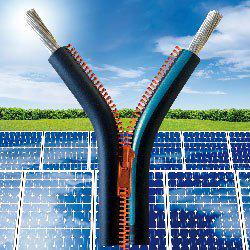The VCEC review of Victoria’s solar feed in tariff, currently Australia’s most generous, was due to be submitted to the Victorian Government last Friday.
A draft VCEC recommendation in May suggested only a 6 – 8c per kilowatt hour benefit for new applicants, plus whatever additional rate solar households are able negotiate with their electricity retailer.
A guaranteed 6 – 8c credit or payment for surplus solar electricity generated, if part of the final recommendation and implemented, would be far less than what is available to households acquiring a system now (25c per kilowatt hour + up to 8c electricity retailer contribution).
Eligible households signing up the current Transitional Feed-in Tariff (TFiT) program before any changes come into effect will receive the guaranteed rate until the end of 2016.
Another trigger that could end the TFiT program for new applicants with little or no warning relates to a 75MW cap for the program; a quota that may be very close to being reached.
Victorians considering going solar should note there have been instances in the past where solar incentives in Australia have been subject to “sudden death” announcements; providing little or no notice of changes. Even when notice is given, many choose to leave acquiring a solar power system until the last minute; causing a rush that results in some missing out as solar providers become overwhelmed with enquiries.
With Victorians enduring two major electricity price hikes in the past 12 months, the case for making the switch to solar has grown stronger. By the end of March, approximately 128,013 solar panel systems were installed in the state.
A good quality entry-level 1.52kW solar power system installed in Melbourne can generate electricity bill savings of up to $600 a year under current feed in incentive arrangements. A 3kW solar array can provide in the region of $1,140 in financial benefits annually and a 5kW system approximately $1,900 in savings a year.



